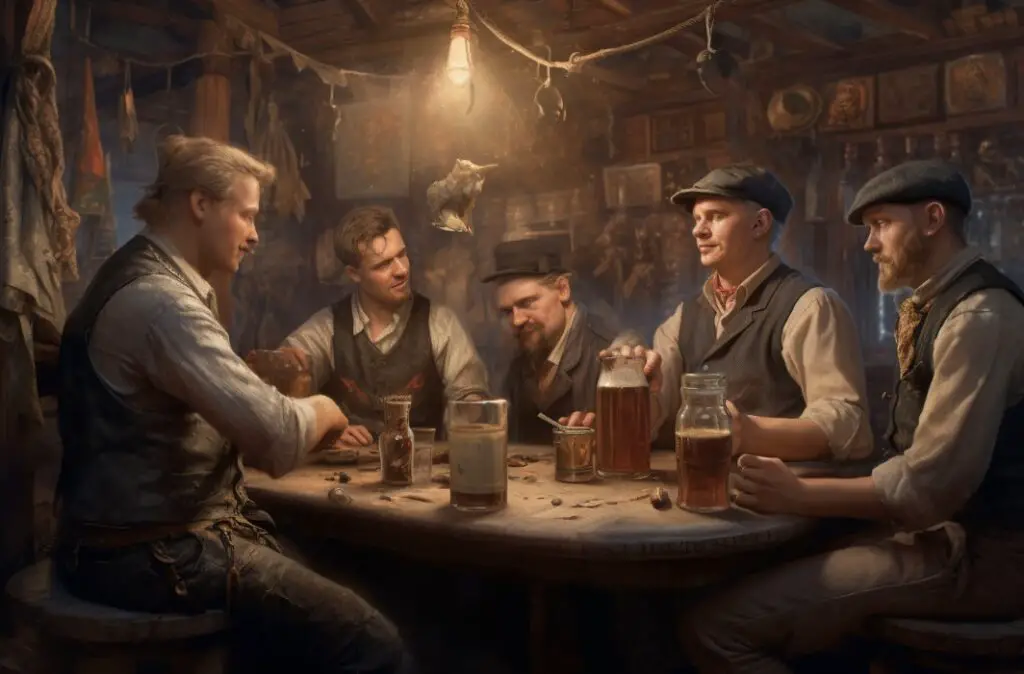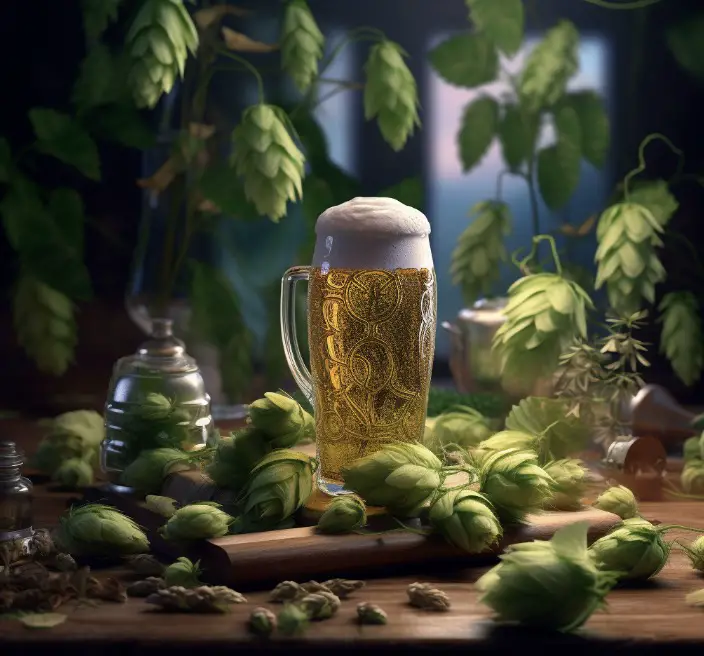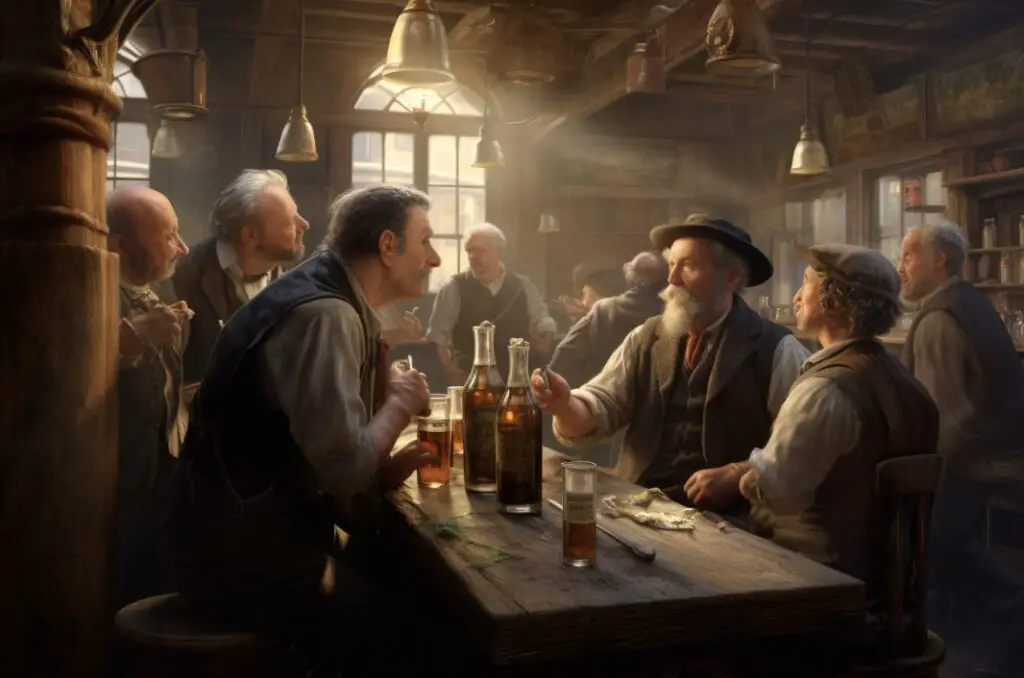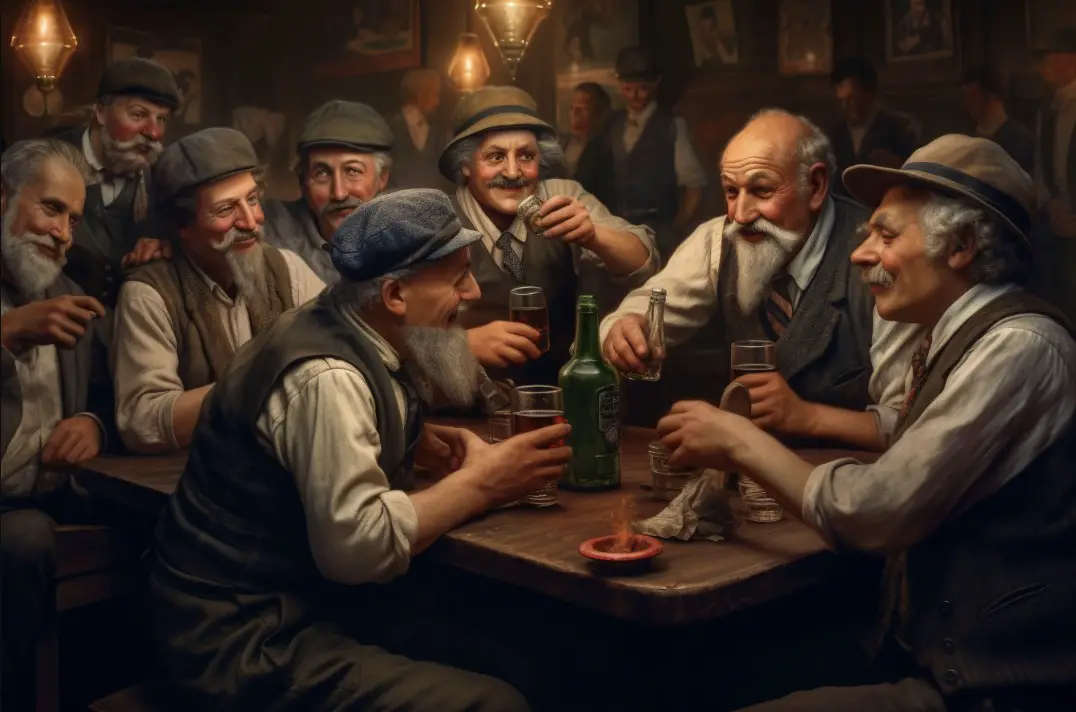In the 1800s, beer typically had an alcohol content of 3-6% ABV.
It was a staple in the daily lives of people across social classes, with many preferring it to water, which was often contaminated.
But, how does this compare to the beer we drink today?
This blog post will delve deep into the brewing techniques, ingredients, and consumption habits of the 19th century, shedding light on the strength of the beers from the past. So grab a pint and join me on this fascinating journey!
Historical Context
During the 1800s, there was a significant shift in brewing technology and practices. The Industrial Revolution saw the emergence of large-scale breweries, which led to a standardized brewing process and, in turn, more consistent beer strength.

However, the 1800s also saw the rise of the temperance movement, which campaigned for reduced alcohol consumption and even total abstinence. These factors influenced the strength of beer during this period.
Industrial Revolution and Beer
The Industrial Revolution brought about advancements in brewing technology, such as steam power and more efficient milling processes. This allowed for more consistent brewing, which resulted in a more uniform beer strength.
In addition, the introduction of new methods for measuring alcohol content, such as the hydrometer, enabled brewers to more accurately determine the strength of their beer.
This led to a more consistent range of 3-6% ABV for most beers during the 1800s.
Temperance Movement
The temperance movement had a significant impact on beer strength in the 1800s. As the movement gained traction, many breweries began producing weaker beers to cater to the changing preferences of the public.
The lower alcohol content was seen as a way to promote moderation and prevent the negative effects of excessive drinking. This led to the creation of “small beer,” which typically had an alcohol content of 1-3% ABV.
Brewing Techniques
Brewing techniques in the 1800s were a combination of traditional methods and new innovations.
The mash tun, for example, was a significant development that improved the mashing process, allowing for greater control over the beer’s strength.
Additionally, the use of different grains and adjuncts influenced the final alcohol content.
Mash Tun
The introduction of the mash tun in the early 1800s allowed for a more controlled and efficient mashing process. This vessel enabled brewers to better regulate the temperature and duration of the mash, which played a crucial role in determining the beer’s strength.
By optimizing the mashing process, brewers could extract more fermentable sugars from the grain, resulting in a higher alcohol content.
Grains and Adjuncts
The choice of grains and adjuncts used in the brewing process also impacted the strength of the final product. Barley was the most common grain used in brewing, but other grains such as corn, wheat, and rye were also used.
These grains were often malted to improve their fermentable sugar content. Adjuncts, such as sugar, molasses, and corn syrup, were used to supplement the fermentable sugars and increase the alcohol content of the beer.
Ingredients
The ingredients used in brewing during the 1800s were relatively simple, with water, malted barley, hops, and yeast being the main components. However, the quality and source of these ingredients had a significant impact on the final strength of the beer.
Water
Water played a crucial role in determining the beer’s strength, as it directly influenced the amount of fermentable sugars extracted during the mashing process.
Hard water, which contains a high concentration of minerals, was better suited for brewing strong beers, while soft water was more appropriate for lighter beers.
The water source could also impact the flavor and quality of the final product, as impurities could lead to off-flavors or spoilage.
If the water was too dirty or contaminated with disease causing microbes, there had to be a certain alcohol percentage to make the beer safe to drink!
This meant that when brewing beers with lower alcohol contents, there was a higher demand for cleaner water!
Hops
Hops were used primarily for their preservative qualities and bittering properties, although they could also add flavor and aroma to the beer.

The strength of the beer was not directly influenced by the hops but could be indirectly affected by the amount used.
Higher hop levels typically resulted in a more bitter beer, which could mask the taste of alcohol, making it seem less potent.
Yeast
Yeast played a critical role in determining the beer’s strength, as it was responsible for fermenting the sugars into alcohol. Different strains of yeast have varying alcohol tolerances, meaning they can produce varying amounts of alcohol before becoming inactive.
Brewers in the 1800s had a limited understanding of yeast and its role in fermentation, often using wild yeast or repitching yeast from previous batches. This lack of control over the yeast strain could result in inconsistent beer strengths.
How did beer taste in the 1800s?
Beer in the 1800s had a different taste compared to modern beers due to variations in brewing techniques, ingredients, and cultural preferences. Here are some key characteristics of beer during that time:
- Malty Flavor: Beers in the 1800s tended to have a prominent malty flavor. Malted barley was the primary grain used in brewing, and it imparted a sweet, biscuity, and sometimes caramel-like taste to the beer.
- Low Hop Bitterness: The use of hops for bitterness, flavor, and aroma was not as widespread or standardized as it is today. Beers in the 1800s generally had a lower hop bitterness, which means they were less bitter compared to many modern beers.
- Sweeter and Heavier: Beers in the 1800s typically had a low alcohol content compared to contemporary mainstream beers. They were often stronger and heavier in body, with higher levels of residual sugars.
- Limited Varieties: The range of beer styles in the 1800s was more limited compared to the diverse array of styles available today. Common styles included pale ales, porters, stouts, and various regional or local beer types.
- Local and Artisanal Brewing: Beer production was largely localized, and most breweries were small-scale and independently owned. This led to regional variations in taste, ingredients, and brewing techniques.
- Yeast Variations: Yeast strains used in brewing were not as refined or controlled as they are today. Brewers often relied on wild or local yeast strains, which could result in inconsistent flavors and sometimes contribute to off-flavors or spoilage.
It’s important to note that there were variations in brewing practices and taste preferences across different regions and countries. These characteristics provide a general overview, but specific details could vary depending on the time period, location, and individual brewers’ techniques and recipes.
Beer exported to the colonies were stronger
Beer exported to the colonies during the 1800s would have undergone some changes due to the challenges of transportation and the desire to cater to the preferences of the colonists. Here are a few factors that could have influenced the taste and alcohol content of exported beer:
- Preservation: To ensure the beer survived the long journey to the colonies, it needed to be more stable and resistant to spoilage. Brewers often employed higher alcohol content and increased hopping to act as preservatives. This could result in stronger and more bitter beers compared to those consumed locally.
- Ingredients: Availability of ingredients played a role in shaping the taste of exported beers. Depending on the region and time period, colonial beers may have included locally sourced ingredients, such as maize (corn) or molasses, in addition to traditional barley. These ingredients could impact the flavor profile of the beer.
- Adaptation to Local Tastes: Brewers often adjusted their recipes to cater to the preferences of the colonial consumers. This could mean producing beers with flavors that were more familiar to the colonists or adapting to the prevailing taste preferences in the region. For example, in some areas, lighter and less bitter beers might have been favored over stronger and hoppier styles.
- Regional Variation: Just as beer styles varied across different regions in the 1800s, so did the exported beer. The taste and alcohol content of the beer sent to different colonies could have varied depending on the brewing traditions and preferences of the specific region.
It’s important to note that the taste and alcohol content of exported beer would have been influenced by a variety of factors, including the preferences of the colonial consumers, the resources available to the brewers, and the transportation challenges of the time.
These factors could result in variations in taste and strength compared to the beers consumed in the home country.
Consumption Habits
Beer consumption in the 1800s was widespread, with the beverage being consumed by people of all ages and social classes. The daily consumption of beer was often seen as a necessity, as it provided a safe source of hydration and calories.

The strength of the beer consumed varied depending on the time of day, with weaker beers being consumed earlier in the day and stronger beers reserved for the evening.
Beer for Breakfast
It was common for people in the 1800s to consume beer with their breakfast, often in the form of a “morning draught.” This would typically be a weaker beer, such as small beer, with an alcohol content of 1-3% ABV. The low alcohol content made it suitable for consumption early in the day without causing impairment.
Stronger Beers for the Evening
As the day progressed, people would often move on to stronger beers. These beers, with an alcohol content of 4-6% ABV, were consumed in the evening or after a day’s work. The higher alcohol content provided a sense of relaxation and enjoyment after a long day.
Conclusion
In conclusion, beer in the 1800s typically had an alcohol content of 3-6% ABV. The strength of the beer was influenced by various factors, including the brewing techniques, ingredients, and consumption habits of the time. Here are 10 interesting facts about beer in the 1800s:
1. Beer was a staple in the daily lives of people across social classes.
2. The Industrial Revolution led to advancements in brewing technology, resulting in more consistent beer strength.
3. The temperance movement influenced the production of weaker beers, such as small beer.
4. Mash tuns improved the mashing process, allowing for greater control over the beer’s strength.
5. The choice of grains and adjuncts used in brewing impacted the final alcohol content.
6. Water quality and source played a crucial role in determining the beer’s (safe) strength.
7. Hops indirectly impacted beer strength by masking the taste of alcohol.
8. Different strains of yeast produced varying amounts of alcohol during fermentation.
9. Beer was often consumed with breakfast in the form of a morning draught.
10. Stronger beers were reserved for the evening or after a day’s work.
FAQs
What did old beer taste like?
Old beer would have tasted sour and possibly even spoiled due to the lack of modern brewing techniques and preservation methods. Additionally, the ingredients and brewing practices used in the past were different, so the taste would have varied greatly from modern beer.
How strong was beer historically?
Historically, beer varied in strength depending on the time period and location. Some ancient beers were weaker than modern beers, while others were much stronger due to the lack of regulation and the use of different brewing techniques.
How strong was beer during the Industrial Revolution?
The strength of beer in the 1800s varied widely, but on average it was lower than modern beers, typically ranging from 3-5% ABV (alcohol by volume).
What did ancient Egyptian beer taste like?
Ancient Egyptian beer was likely thick and sour, with a low alcohol content and a cloudy appearance due to the use of bread as a key ingredient. It was often flavored with herbs and spices such as coriander and dates.
Was beer stronger in the past?
Yes, beer was generally stronger in the past due to a variety of factors including the use of stronger malts and the absence of modern brewing techniques to control alcohol content.
What did 1800s beer taste like?
Beer in the 1800s varied greatly in taste depending on the region and ingredients used. However, it was generally maltier and less hoppy than modern beer, with a lower alcohol content. Some common flavors included caramel, toffee, and bread-like notes.




